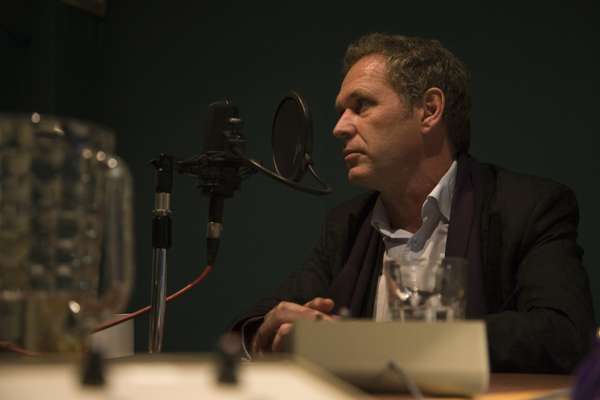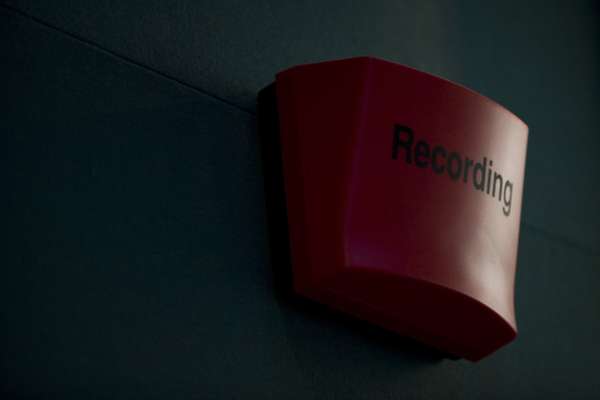Design dialogue / Global
Design dialogue
In the first edition of Monocle’s Design Dialogues, an intimate series of discussions on key design issues, we throw the spotlight on the future of the workplace. You can also listen to the full discussion at [monocle.com](http://monocle.com).






It’s 14.40 London time and Monocle’s editor-in-chief Tyler Brûlé has met with three leading experts to talk about their vision for design for the workplace in 2009 and beyond. On the panel are Matthew Harrison, senior associate at the Helen Hamlyn Centre in London; Jonathan Reed-Lethbridge, UK design director for office furniture firm Ergonom; and Kim Herforth Nielsen, founder of Danish firm 3XN in Copenhagen and Aarhus.
Tyler Brûlé: As 2009 approaches, CEOs COOs and CPOs [chief planning officers] are busy looking at ways of improving efficiencies for a turbulent year ahead. I was just in New York visiting a number of companies, including a very large bank. So much of the focus in this last quarter was looking at how many people they can get out of the building by 1 January. Do you think there is a certain urgency in the marketplace now?
Matthew Harrison: I’m sure there is. The danger is that if people rush too quickly into tearing down their offices and forcing hot-desking, you’ll create a very difficult environment to work well in. It has to be a measured response. You can move forwards and create a more flexible and lower-cost environment but you have to keep the quality and make sure that people can work properly.
TB: Jonathan, from the commercial side, what are you seeing right now? Is there a bit of short-termism?
Jonathan Reed-Lethbridge: What is happening is there’s a shift in how the organisation wants to spend its money. Rather than packing money into design of the work station, they’re pumping it into the social space of the building.
TB: Kim, you’ve just finished quite an interesting project north of Copenhagen for Saxo Bank. In a country that’s been quite challenged by the recent turbulence, what was the bank looking for?
Kim Herforth Nielsen: The bank wanted something that could be an image of what they’re doing – they’ve been moving forward very fast during the past 10 years. Six hundred people are sitting in one room and all the social spaces are very important – it’s where you talk to each other, share knowledge and learn.
TB: Was that the brief from the client?
KHN: It was – and it is the brief from many new companies in Denmark that they want to keep the staff in the building at lunchtime because if they leave the building they lose time. Mostly they want people that work together to speak to each other – the firm gains from that too.
TB: There seems to be an emphasis on workplace culture in Denmark. If I look at other European countries, certainly the country we’re sitting in at the moment, I don’t see the same. Is this something you find unique to Danish clients?
KHN: I think this thing about knowledge sharing, doing something special out of the social areas, is special to Scandinavia.
TB: Matthew, your study looked at the UK, Australia and Japan. If we look at a variety of developed nations do you think that everyone is travelling at the same speed in the same direction or is there significant differences when you survey key markets?
MH: There are significant differences. We went to Japan because it’s got the oldest population in the developed world. The design of its offices is very closed. We went to Australia because it’s got one of the youngest populations in the developed world. They’re competing for the new talent coming up, focusing on younger workers, using their buildings to attract new generations. They’re very advanced; they’ve got a lot of space and freedom in terms of design.
TB: Jonathan, when you’re sitting down, not just with architects and designers but also with clients, what are the key things you’re trying to push from your group?
JRL: It’s interesting that you use that word push – it’s actually about listening very hard. The experience in recent times is that it’s not one size fits all from a manufacturing standpoint. Often a lot of fine-tuning is done. It’s a very different marketplace now than it was 10 years ago
TB: Kim, when you get a new assignment are you finding what you want in the marketplace?
KHN: There’s a lot of variety now. When we started doing these kinds of buildings nearly 20 years ago, we had to design our own furniture because there was nothing on the market but it’s different now.
TB: Because [Saxo Bank] was a Danish bank sitting beyond the capital city, was it also important to have a Danish signature or did they want it to feel international?
KHN: They are very international – they didn’t want anything particularly Danish in the furniture. They just wanted the best for the price. The biggest challenge is to get the best staff. If you don’t have a good workplace you don’t get the best people, so you must design it well.
JRL: We’ve all become aware of how getting good talent into a business is finding its way into the very nature of how a building is designed and developed.
KHN: The image is very important; they have to be proud of where they’re working. It is a showcase.
TB: What do you think is missing from the marketplace or workplace? Kim?
KHN: Staircases – we want people to move together. A lot of buildings have the staircases tucked away. You take the elevator and never meet anybody.
MH: One thing we found missing is a contemplation space. It’s somewhere that in a knowledge economy puts a high value on thinking. As part of the project we designed some provocative furniture and a rain curtain, a wall of falling water that divided a space and added a natural element to it. It gave people an acoustic shield and humidified the air, as well as acting as a focal point. We also created a gardening facility. Everyone around us told us they like foliage and having a connection with nature – it makes the place feel more domestic and comfortable to be in. So we created this gardening space where people could bring their plants and grow them – and maybe even grow a bit of food for dinner.
TB: Finally gentlemen, I just want to look out to 2009 and beyond. Kim, if we look at major developments that are on the horizon what do you think are the key trends?
KHN: I think people will spend more time in the workplace than at home.
TB: Even in Denmark? People seem to go home at 15.00 when I’m there.
KHN: [Laughs] Not at my work! But anyway, I think it’s important to make it an enjoyable and attractive place for people to be.
TB: Jonathan what do you see?
JRL: Many of the same themes – the issue of aesthetics will be about materials. We’re bringing kitchen materials into the workplace – glass and lacquered finishes, maybe even stone. I think that’s exciting.
TB: Matthew, at the Royal College, what are you looking at?
MH: I think we’re going to see greater levels of domesticity coming into the workplace. Work has invaded our home lives and paradoxically as technology advances it’s going to make the workplace more homely. We’ll have a greater variety of furniture and freedom around the office. We’ll see things such as rocking chairs and greenhouse metaphors being used inside the office.
TB: Matthew Harrison, Kim Herforth Nielsen and Jonathan Reed-Lethbridge, thank you.
Jonathan Reed-Lethbridge
UK Design director, Ergonom
London-based furniture firm, Ergonom, is part of the Molteni Group, the Italian manufacturing company that owns Unifor, Dada and Molteni & C. Ergonom furnishes offices worldwide. Reed-Lethbridge joined in 2006. He’s also worked at consultants DEGW, and led product development at Knoll International.
Matthew Harrison
Senior associate at Helen Hamlyn Centre
The Helen Hamlyn Centre is part of the Royal College of Art (RCA) in London. Matthew, who graduated from the RCA in 2004, has been working on a two-year long research project, Welcoming Workplace. This investigated ways to rethink office design for an ageing workforce and led Harrison to Japan and Australia to compare work spaces.
Kim Herforth Nielsen
Founder of 3XN
Danish architect Herforth Nielsen founded 3XN in 1986. With offices in Copenhagen and Aarhus, the firm works on public, commercial and residential projects. Current projects include a new headquarters for KPMG in Copenhagen, and Lighthouse, a mixed use development in Aarhus, designed in collaboration with Amsterdam practice, UNStudio.


